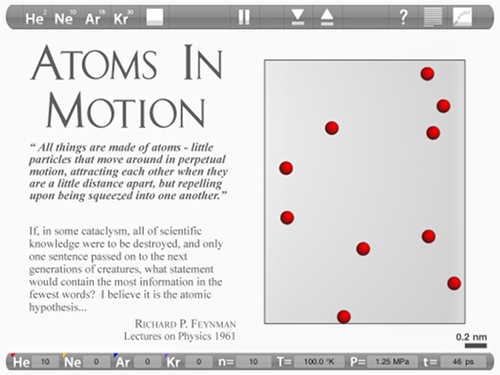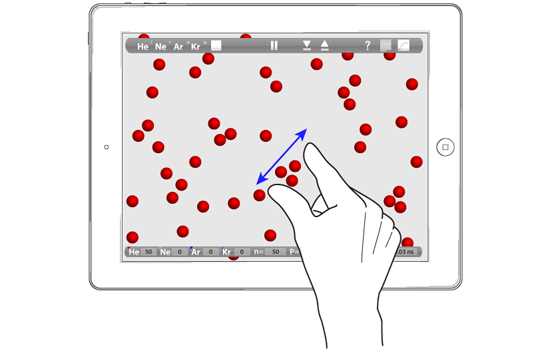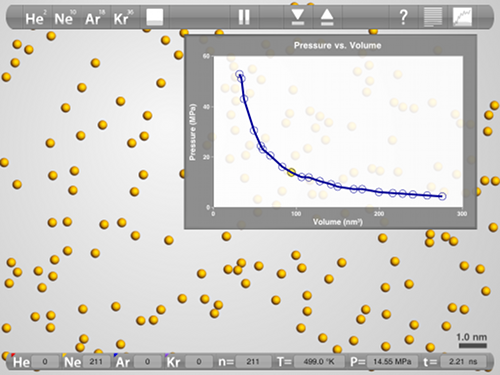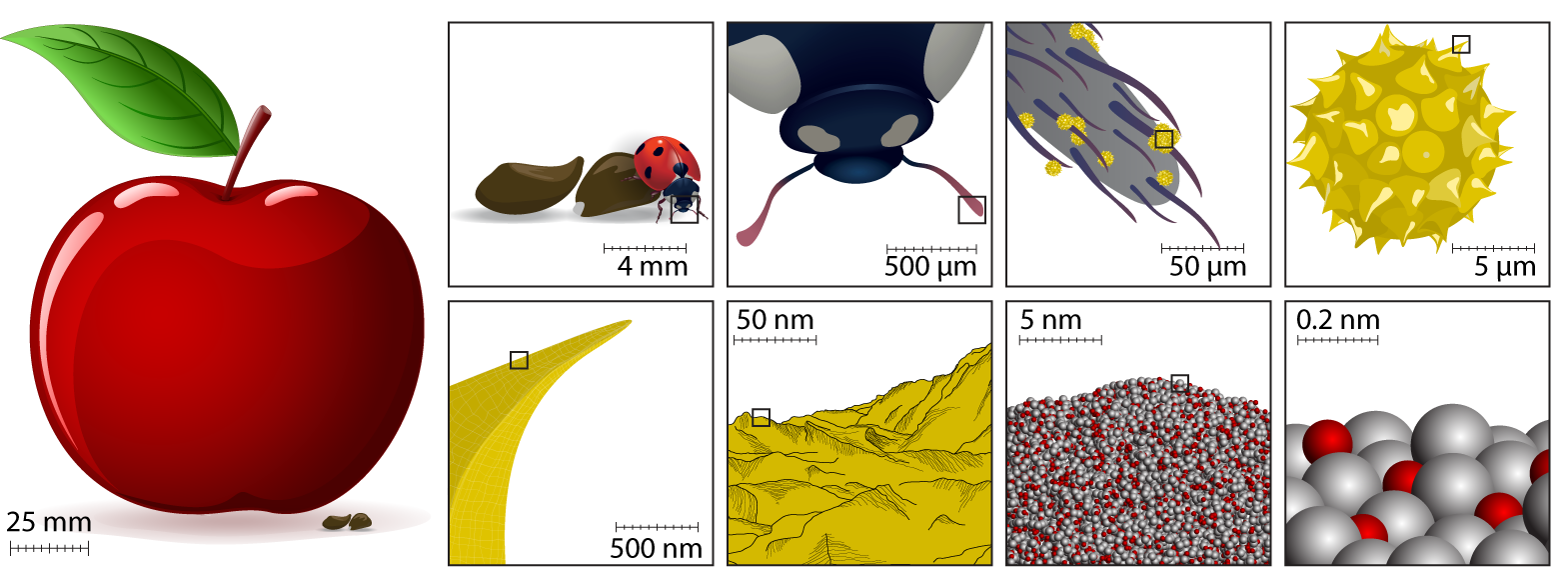I recently came across a very cool app called Atoms in Motion ($2.99). With this app you can perform molecular dynamics simulations of He, Ne, Ar, and Kr (and mixtures thereof) at different temperatures, volumes, and number of atoms.
It is effortless to set up a simulation and change the conditions: swipe to change T (or shake the iPad!) and pinch to change V. You can also flick an atom and, frankly, the most fun is to build a few clusters at 1 K and then move an atom carefully in position and flick it at a cluster! Something I have dubbed "atomic billiards".
Teaching
Since not every student has an iPad (yet), the main teaching-use will probably be in lecture, projection the simulation on using a VGA adapter (hint: simulations make for great peer instruction questions). Because it is based on real simulations, and not pre-recorded movies, the app is very versatile and can be used to demonstrate very simple things like solids, liquids, and gases or an atomic view of temperature or relatively complex things like defects in solids and deviations from ideal gas behavior (using the plotting tool).
However, the ideal use of this app would really be self-guided discovery. Most features are very intuitive (the plotting tool takes some practice) and I'd love to see what a class of 10-year olds iPad users would get out of this. Side note: it would really have been great if the iPad could vibrate and the pressure could be linked to the vibration.
Documentation
Another strength of this app is the quality of documentation and extra information available in the app and on the top bar of the website. I'm particularly impressed by the animated figure on "how big is an atom", which reminded me of the orders-of-ten approach. I would be lovely to see a similar explanation of the nano-second.
Disclaimer: I was made aware of this app by the developer, but I bought my own copy, and was not asked to write a review on the blog.








No comments:
Post a Comment